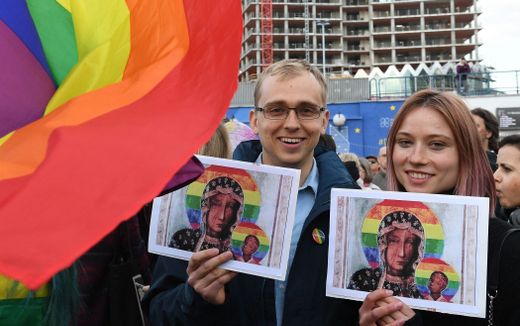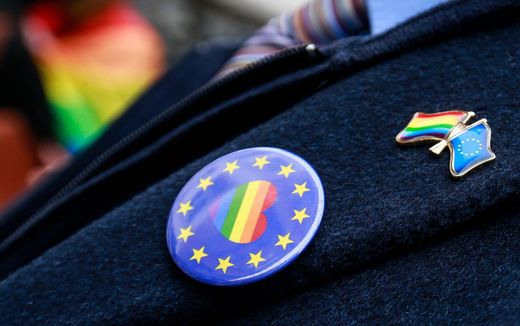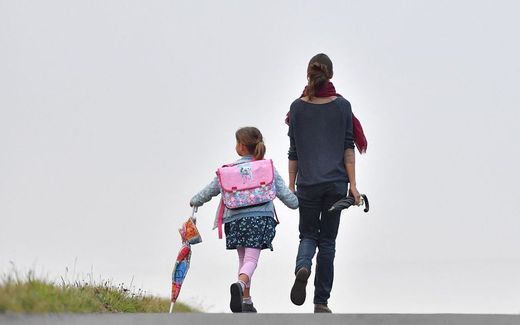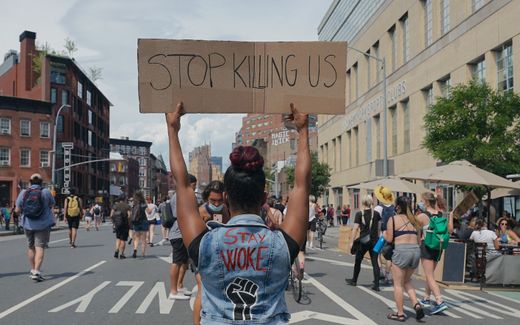Rainbow crossings prompt legal questions
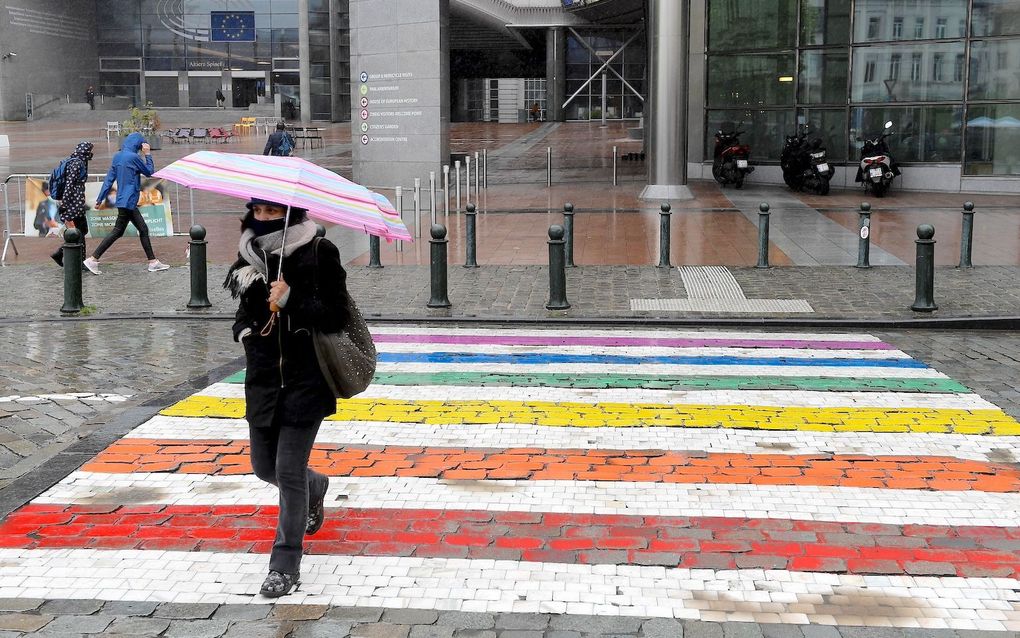
A 'gaybra' in Brussels, in front of the European Parliament. Photo AFP, John Thys
European Union
All was quiet outside Norway's Russian embassy in Oslo until a pedestrian crossing was painted in rainbow colours.
The rainbow crossing upped the ante in Norway's gay rights community and emboldened protests against Russia's "anti-gay" laws passed in 2013. Over ten years later, cities across the EU have continued the trend of replacing the "zebra"-like stripes at pedestrian crossings with the rainbow colours found at gay pride events.
Since Oslo, rainbow crossings began appearing in other Norwegian cities such as Bergen, Strømmen and Harstad. While many gay activists feel that it demonstrates inclusivity, city authorities are questioning its legality and potential spread of propaganda.

In a recent report by VG, the rainbow crossings have come under fire from the Norwegian Public Roads Administration. As detailed in a recent proposal, adding colours between the white stripes should not be permitted, as it can confuse pedestrians, according to the section chief for roads and streets.
"Different colours between the white pedestrian crossings can make these stripes harder to perceive for some road users. These markings give pedestrians rights and other road users the obligation to stop," Matteo Pezzucchi said, who works for the Norwegian Public Roads Administration.
The administration has also said that any road marking should not be used to express "political or non-profit causes." "This must be done in other ways," the administration emphasised. The proposal has been sent to the Ministry of Transport and Communications for a final review, which will take place on 8 April.
The legal debate has also continued in the Netherlands. In 2019, the Dutch city Almere unveiled a trans path crossing, which became the first "transpad" in Europe, as written on Almere's municipality page. Other rainbow pedestrian crossings (regenboogpad or gaybras have also appeared in at least 50 different places throughout the country.
According to an article posted by the Dutch law firm, SAP Letselschade Advocaten, rainbow crossings can be considered "beautiful" but "life-threatening" too.
As detailed in the official traffic regulations, zebra crossings must meet specific requirements in their design. For example, the zebra part cannot be less than 4 meters wide and must always include white stripes with a distance of 0.4 to 0.6 meters. They must also have a specific legal road sign if a traffic light is absent. Whenever pedestrians cross these areas, cars are required to stop. However, the article says that when the zebra becomes a 'gaybra', pedestrians do not have the right of way. It also noted that no legal right of way can be established when a traffic light is not working in a rainbow zebra area.
"So, there is a chance that an accident will happen sooner on a rainbow zebra crossing than on a regular zebra crossing. There are many other ways in which attention can be drawn to the LGBTIQA+ community," the report said.
Virtue-signalling
In addition to potential fatalities, some believe that national governments are using the 'gaybras' as virtue-signalling tools.
"The Dutch government is forcing you to pay, through road taxes, for these zebra crossings whether you want it or not. Officially, there is a rule on what a zebra should look like to be legal, but they twisted it so much that we're paying for something that's not even a legal zebra. Why force that person to do that?" Martin said, a Dutch national, social commentator, and missionary in Central Europe. He and his wife, Esther, prefer to go by their first names for safety reasons.
While nationwide efforts continue, government pressure to back the crossings remains under criticism. According to a report from Young Impact, a student-led LGBT alliance, at least 1,000 rainbow zebra crossings were chalked by several nationwide students in 2022. More than 150 schools participated in the campaign.
The rainbow in the crossings was also made into a lesson plan. Teaching packages that emphasised diversity and homophobia in sports were also sent out to secondary and vocational schools. Although the campaign was temporary, the move bolstered support for municipalities in creating permanent rainbow crossings near the students' schools. The Dutch government partly sponsors Young Impact.
Diversity

As campaigns continue to grow, the rainbow zebra crossing is more than just a rainbow or an innocent message to promote diversity, according to Esther. Esther works as a therapist and partners with Martin as a missionary. "They are forcing these views on us. It's not just inclusion. If you introduce yourself, for example, why would you start with a sexual preference," she asks.
This forced message can also come in the form of being identified with a sexual preference and preferred pronouns, she said. Such introductions have become the norm in many places. She also said that the need to accommodate others becomes endless if you start bending the law for one group.
"Should we have a vegan or a meat-eating zebra crossing?" she asked. "What about a Christian zebra? Nope. God forbid you have a Christian zebra. Christians are now a minority, and their stage is being burned down," she said.
As more government funds flow into these campaigns, Martin also said that the Far Right is winning because of the rainbow zebra crossings. "If the Dutch government had not stepped into this beehive, it wouldn't be an issue. It's not going to stop with the zebras. We're paying a huge price, and it goes further than just a zebra," he said.
God's faithfulness
While the debate continues about rainbows, some Christians believe that its original message is being distorted.
"The flag of the LGBTQAI ++ movement is not the flag of the rainbow. The rainbow has seven colours, and the LGBTQAI ++ flag has only six. According to the Bible, the rainbow is a sign of God's faithfulness to all living creations," Vincent Lagerwaard, a Christian social media commentator, said.
In contrast to modern interpretations of the rainbow's message, Esther says that the Bible is obvious when it comes to diversity. Her husband, Martin, cites the Biblical verse, 1 Corinthians 6:12, which talks about honouring God with our bodies. While we may have the right to do anything, not everything is beneficial.
"That's why Jesus had to come. You feel, the desire to sin proves your need for grace. I am also human and not a saint; not at all. It's not gay to straight. It's lost to saved. God calls us not just to heterosexuality but to holiness. Even though the world would paint a totally different story of what sexuality is and isn't, God's word is clear, and He can save," Martin said.
Related Articles




